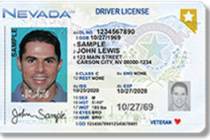Reality TV v. Reality: Is Extreme Couponing for Real?
Most weeks, I receive around 1,000 emails from readers. Since TLC's "Extreme Couponing" reality TV series hit the airwaves, my email has quadrupled. Many of them sound like this:
"I've read your column off and on but I don't really use coupons hard-core. Then the "Extreme Couponing" TV show came on. I really want to get the same free stuff those shoppers do. How do I get all of the free stuff with coupons?"
And this:
"My husband and I are both out of work and want to learn extreme couponing. Teach us how to do it."
Extreme couponing is such a popular topic right now, in the next few weeks I'd like to address some of the concerns and questions that have come up in its wake.
Anyone can learn to cut their grocery bills dramatically using coupons. There is no magic. Truly, anyone can do it. But, it's important to understand that the made-for-TV version of couponing isn't the way most coupon enthusiasts use coupons during their own shopping trips
In fact, extreme couponing as depicted on TV has little or no relation to the couponing that happens in real life, in grocery aisles and checkout lines across the country. Let's start with this notable difference between perception and reality.
As seen on TV: People on the show get most of their groceries free.
Reality: People on the show get large quantities of a few specific grocery items free.
One of the easiest ways to get products free with coupons is to match a high-value coupon to a low sale price. This week at my store, three-pack bars of soap are on sale for $1. The newspaper inserts recently had a $1 coupon for this item. Using the coupon with this sale, the soap is free.
Many coupon shoppers get multiple copies of the newspaper during good coupon weeks, specifically to acquire more coupons to match with sales. This week I got four newspapers, so I was able to buy four three-packs of the soap, all of them free.
An extreme couponer likely won't stop there. As you may have seen on the show, few of them are content to stop at using a mere four coupons to purchase the same item. Some shoppers were shown dumpster diving to retrieve discarded newspaper inserts. Others were shown driving around town, collecting "unclaimed" newspapers from driveways, just to get more coupons.
These practices raise legal, safety and ethical issues. For this example, let's assume that the extreme coupon shopper collects 100 inserts, each with a $1 coupon for the three-pack of bar soap.
In theory, if the terms of the coupons allowed and the store permitted it, the shopper could go to the store, buy 100 three-packs of soap and dramatically "cut" a $100 grocery bill to $0 using coupons. The grocery cart would be full of nothing but soap.
True, the extreme soap shopper won't need to buy soap for a good long time! I'm all for stocking up, but I also know that the soap sale repeats every few months. Twelve bars of soap are plenty to last me until the next sale comes around, and I'm happy to store 12 in my stockpile. I would not want to store 300 bars of soap.
Now imagine that in the same week, soap was on sale for $1, pasta was on sale for $1, toothpaste was on sale for $1 and frozen vegetables were on sale for $1. If I have one $1 coupon for each, all four are free. But if I have 100 $1 coupons for each, 400 are free. That's the start of an extreme couponing shopping trip. Consider the time it takes to cut 400 coupons. It's easy to see why shoppers on the show say they spend more than 30 hours each week couponing.
Next week, I'll address more reader questions on extreme couponing.























